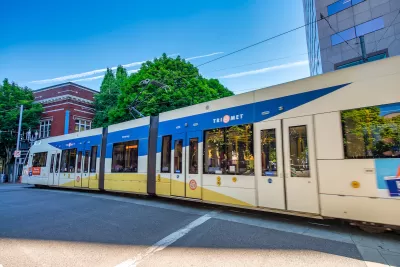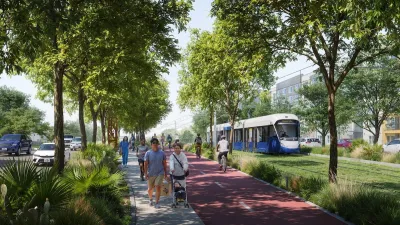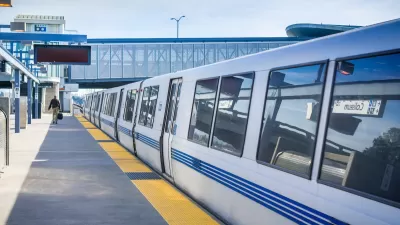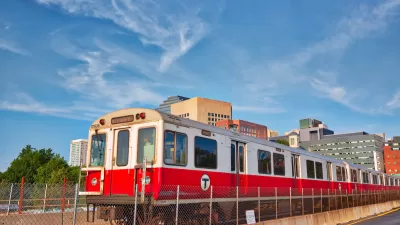When temperatures hit 100 degrees, the city’s two train systems face challenges that force them to slow their speeds or stop operations altogether.

Portland’s MAX trains must slow down after temperatures hit 100 degrees, reports Anthony Macuk for KGW.
According to Macuk, “TriMet has upgraded the system in recent years to maintain full speed at higher temperatures, but there's still an upper limit.” After 100 degrees, MAX trains will slow down to a top speed of 35 miles per hour, while WES trains will top out at 40 mph.
At 105 degrees, the WES trains stop running. If temperatures get that high, TriMet may adjust or suspend service on MAX trains, but that decision is made based on conditions throughout the system and out of consideration for the safety of riders and employees.
As Macuk explains, “MAX trains are powered by overhead wires, which have to be kept taut so the train's pantograph arm can maintain steady contact. But the wires are made of copper, which expands when heated and can cause sagging.” If the sagging causes the lines to sink too low, trains have to slow down or stop entirely.
WES trains face a different problem, one that could impact Amtrak and other train systems as well. “TriMet's WES trains are diesel-powered and run on Portland & Western freight rail tracks with no overhead wires, but they can still get tripped up by heat waves because the high temperatures can also cause the steel rails to expand and temporarily deform — a phenomenon called ‘sun kinks’ — making it unsafe to drive trains over them at full speed.”
FULL STORY: Yes, TriMet MAX trains have to slow down when it's very hot out

Alabama: Trump Terminates Settlements for Black Communities Harmed By Raw Sewage
Trump deemed the landmark civil rights agreement “illegal DEI and environmental justice policy.”

Planetizen Federal Action Tracker
A weekly monitor of how Trump’s orders and actions are impacting planners and planning in America.

The 120 Year Old Tiny Home Villages That Sheltered San Francisco’s Earthquake Refugees
More than a century ago, San Francisco mobilized to house thousands of residents displaced by the 1906 earthquake. Could their strategy offer a model for the present?

Housing Vouchers as a Key Piece of Houston’s Housing Strategy
The Houston Housing Authority supports 19,000 households through the housing voucher program.

Rural Population Grew Again in 2024
Americans continued to move to smaller towns and cities, resulting in a fourth straight year of growth in rural areas.

Safe Streets Grants: What to Know
This year’s round of Safe Streets for All grant criteria come with some changes.
Urban Design for Planners 1: Software Tools
This six-course series explores essential urban design concepts using open source software and equips planners with the tools they need to participate fully in the urban design process.
Planning for Universal Design
Learn the tools for implementing Universal Design in planning regulations.
Clanton & Associates, Inc.
Jessamine County Fiscal Court
Institute for Housing and Urban Development Studies (IHS)
City of Grandview
Harvard GSD Executive Education
Toledo-Lucas County Plan Commissions
Salt Lake City
NYU Wagner Graduate School of Public Service





























